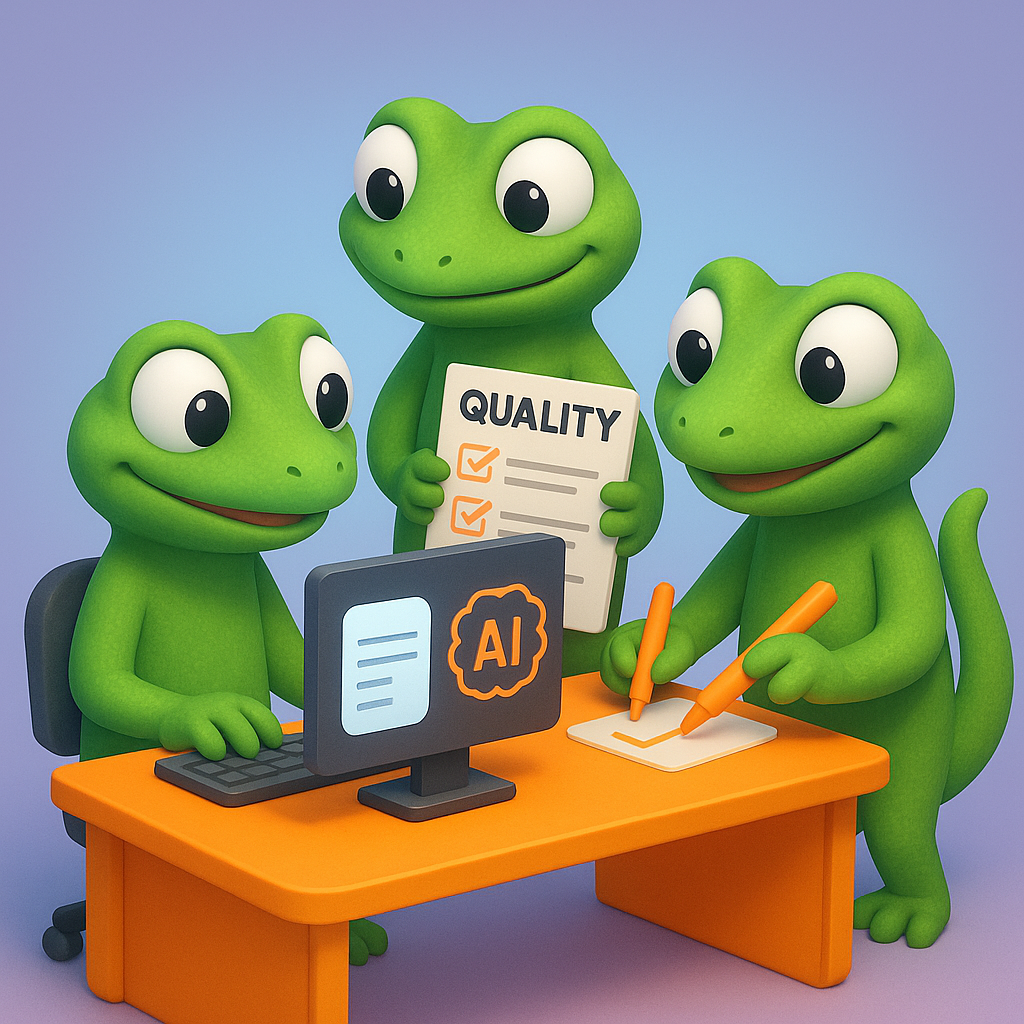Case Studies Showcasing Successful LLMO Implementation
Large Language Model Operations (LLMO) is transforming how businesses engage with AI technologies beyond experimental use cases. These real-world implementations demonstrate how organizations are scaling language models to deliver measurable business impact.
Financial Services: Scaling Content Production Without Additional Headcount
A leading financial services firm faced the challenge of expanding their content program without hiring additional writers. By implementing an LLMO-driven content workflow, they achieved remarkable results:
- Scaled monthly content from 5 to 50 pieces without additional staff
- Maintained consistent quality across all materials
- Implemented a hybrid workflow where humans handled strategy while AI managed initial drafting
- Human editors provided final polish for brand voice and compliance
The key to their success was a clearly defined process: human strategists defined audience needs and content objectives, AI tools generated initial drafts based on detailed briefs, and human editors refined the content for brand alignment and accuracy. This approach exemplifies large language model optimization in a professional services context.

Unilever: Crisis Management Response Time Reduction
Unilever faced significant challenges monitoring social media across 50+ platforms, resulting in slow crisis response times. Their LLMO implementation showcases how enterprise-grade deployment can transform operations:
- Deployed Grok 3’s “Big Brain” mode to flag urgent issues across platforms
- Reduced crisis resolution time from 6 hours to 9 minutes
- Implemented real-time trend analysis to identify potential issues before they escalated
According to their marketing team, “The system identifies potential issues faster than any human team could, allowing us to focus on strategic response rather than manual monitoring.” This case demonstrates how tools for monitoring LLMO performance can be crucial for real-time brand protection.

E-commerce Brand: Product Content Velocity
An e-commerce retailer struggled with creating consistent product descriptions at scale:
- Challenge: Bottleneck in producing SEO-optimized descriptions for 100+ SKUs
- Solution: Custom LLMO platform using structured product data (specifications, features, materials)
- Results:
- 10x faster content creation
- 22% improvement in product page conversion rates
- 17% increase in organic traffic
The implementation success relied on feeding structured data into the LLM system with clear templates and guardrails for output consistency. This case study exemplifies how LLMO can transform content production when properly integrated with existing product systems. Their workflow integration represents a best practice for e-commerce brands looking to scale product content.
Promoty: Dramatic Traffic Growth Through AI-Optimized Content
Promoty implemented a comprehensive LLMO strategy for content optimization with impressive results:
- 224% monthly traffic growth in just four months
- 45% increase in user signups
- 58,400 monthly clicks from organic search
Their approach centered on using AI tools for keyword clustering and content optimization, allowing them to target semantic relationships between topics more effectively than manual methods. By grouping related terms and creating comprehensive content clusters, they developed a content strategy that dominated both traditional search and LLM-powered search environments.
Multinational Retailer: Global Market Expansion
A major retailer used LLMO to overcome localization challenges:
- Leveraged Qwen2.5 Max for multilingual content adaptation
- Achieved 70% reduction in localization costs
- Successfully expanded to 15 countries in record time
The key insight: rather than simple translation, the LLMO system adapted marketing campaigns culturally (e.g., Spanglish for Mexico market, proper Khmer↔English translation for Southeast Asia). This adaptation went beyond word-for-word translation to capture cultural nuances, idioms, and regional preferences that resonated with local audiences, demonstrating the sophistication of modern language models for global marketing.
Implementation Challenges and Solutions
Successful LLMO implementations address several common challenges:
Brand Voice Consistency
Challenge: AI-generated content often lacks distinctive brand voice.
Solution: Companies like the financial services firm mentioned earlier implemented human editorial oversight post-AI drafting, creating style guides for AI systems and training models on existing high-performing content. Some organizations have developed brand voice libraries - collections of exemplary content pieces that embody their tone and messaging - which they use to fine-tune their LLM outputs through few-shot learning techniques.
Integration With Existing Systems
Challenge: Standalone AI tools create workflow silos.
Solution: Leading implementations connect LLMs to existing content management systems through APIs, ensuring seamless workflow integration. The most successful organizations build middleware layers that translate between their established marketing technology stack and newer LLM capabilities. For example, one beauty brand integrated their customer data platform with Claude 3.7 to create a continuous feedback loop between customer interactions and personalized messaging.
Quality Control at Scale
Challenge: Maintaining content quality with high-volume AI production.
Solution: Implementing systematic quality checks, sampling methodologies, and user feedback loops to continuously improve output. Companies at the forefront of LLMO have established quality control frameworks that include:
- Random sampling audits (typically 5-10% of all content)
- Automated plagiarism and fact-checking tools
- Performance-based evaluation (tracking which AI-generated content performs best with target audiences)
- Customer feedback integration systems
Technology Stack Considerations
The most successful LLMO implementations typically include:
- Core LLM Infrastructure: Either custom-trained models or enterprise API access to models like GPT-4o, Claude 3.7, or specialized industry models
- Prompt Management Systems: Tools for version control, testing, and optimization of prompts
- Integration Layer: APIs connecting LLMs to content management systems, analytics, and other operational tools
- Monitoring Solutions: Real-time performance tracking for both technical metrics (latency, cost) and quality metrics (relevance, accuracy)
These components work together to create a resilient, scalable LLMO system that delivers consistent results. For marketing teams tracking performance across these systems, tools for monitoring LLMO performance are essential.
What’s particularly noteworthy is how organizations are building custom middleware layers to connect their existing tech stacks with new LLM capabilities. Rather than replacing existing systems, successful implementations augment them, creating new efficiencies while preserving institutional knowledge and workflows.
Strategic Recommendations for LLMO Implementation
Based on these case studies, here are key strategic recommendations:
- Start with well-defined use cases that have clear ROI potential
- Implement hybrid human-AI workflows rather than full automation
- Develop clear measurement frameworks to track both efficiency gains and quality metrics
- Build cross-functional teams that combine AI expertise with domain knowledge
- Create feedback loops for continuous improvement of LLM outputs
Organizations that follow these principles tend to achieve the most impressive results with their LLMO implementations. The hybrid approach is particularly important - as one marketing director noted, “Our most successful implementations have humans in the loop at strategic decision points while letting AI handle the scale and repetition.”
The Economics of LLMO Success
The ROI of LLM optimization is compelling across the case studies:
- Content Production Efficiency: 50-75% reduction in production time for blogs, product descriptions, and technical content
- Resource Allocation: Teams redirecting human expertise to high-value creative and strategic work
- Market Expansion: Ability to enter new markets faster with localized content
- Conversion Improvement: Product pages with AI-optimized content showing 15-25% higher conversion rates
When compared to traditional SEO vs LLMO techniques, the combined approach delivers superior results in today’s evolving search landscape.
The financial impact is most dramatic when organizations track both direct cost savings and opportunity creation. One beauty brand reported that while their content production costs decreased by 35%, their ability to rapidly test different messaging approaches led to a 12% overall conversion improvement across their product line - a revenue impact that far outweighed the direct cost savings.
TL;DR
Successful LLMO implementations deliver concrete business results by combining proper technology integration, strategic human oversight, and clear measurement frameworks. The most impressive case studies show 50-75% efficiency gains in content production, dramatic traffic increases (up to 224%), and significant conversion improvements (15-25%) when implemented correctly. Companies achieving these results typically employ hybrid human-AI workflows rather than full automation, focusing human resources on strategic and creative tasks while leveraging AI for scale and efficiency. The key to success lies not in the technology alone but in thoughtful implementation that augments existing business processes.
